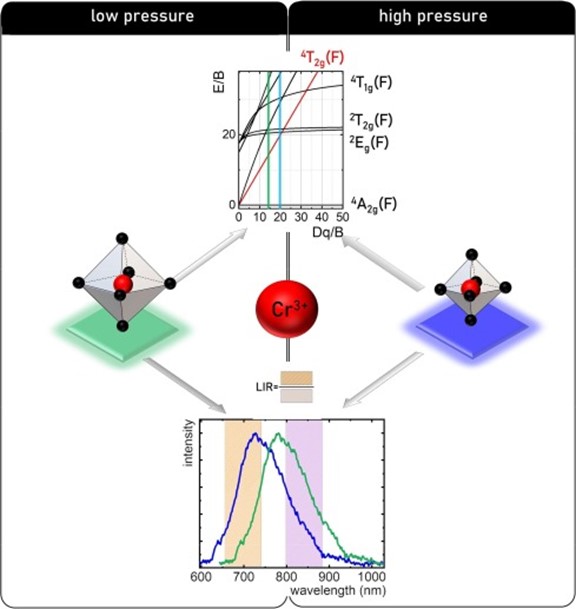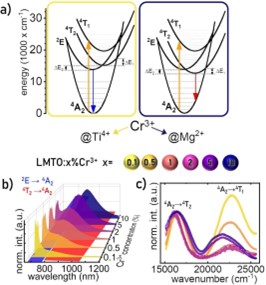Temperature invariant ratiometric luminescence manometer based on Cr3+ ions emission
Title: Temperature invariant ratiometric luminescence manometer based on Cr3+ ions emission
Authors: M. Szymczak, P. Woźny, M. Runowski, M. Pieprz, V. Lavín, L. Marciniak
Journal: Chemical Engineering Journal
DOI: 10.1016/j.cej.2022.139632

In their recent article, a group of prof. Lukasz Marciniak is studying Temperature invariant ratiometric luminescence manometer based on Cr3+ ions emission.
The ability to remotely read and image the pressure of objects enables to obtain key information from the diagnostic perspective. This possibility is offered by luminescent manometry. However, in most of the solutions proposed so far, the emission intensity or spectral position of the emission band is used as a manometric parameter, which is associated with low measurement accuracy or low relative sensitivity, respectively. In addition, both of these parameters are significantly dependent on temperature, which limits the reliability of the pressure reading.
In this paper, a new approach based on the emission of 4T2→4A2 Cr3+ ions has been proposed. In this case, the pressure increase causes a shortening of the average Cr3+-O2- distance and thus an enhancement of the strength of the crystal field affecting the Cr3+ ions. However, in the proposed case, instead of the spectral position of the band, the ratio of luminescence intensities integrated into the two spectral ranges is analyzed as a manometric parameter. The main advantage of the proposed ratiometric approach is the possibility of 2-dimensional pressure imaging and high sensitivity to pressure changes. In addition, as it has been shown, the proposed ratiometric method enables temperature invariant readout.
This is the first work, that introduced this approach in which Li2Mg3TiO6:Cr3+ is discussed as a case study. However, the high susceptibility of the 4T2 energy to changes in the crystal field strength allows boosting the relative sensitivity of the manometer by properly optimizing the chemical composition of the host material.

Highlights:
- A new ratiometric pressure readout approach is proposed
- A highly sensitive ratiometric manometer is described
- Cr3+ concentration modifies the crystal field strength
- LMTO:Cr3+ allows for temperature invariant pressure readout
See also
- The Institute
- General information
- Employees
- News
- Scientific News
- Gender equality plan
- Address and contact data
- Research
- Research profile
- List of publications
- List of projects
- International cooperation
- Information in BIP
- Scientific Council
- Organizational structure
- GDPR


